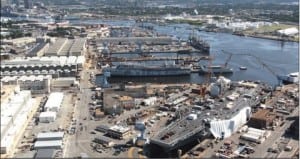
The U.S. Navy is planning to spend $21 billion over 20 years to modernize and optimize the four public shipyards to help sustain a larger Navy, top Navy officials told a Senate panel yesterday.James Geurts, assistant secretary of the Navy for research, development, and acquisition (ASN RDA), and Vice Adm. William Merz, Deputy Chief Of Naval Operations for Warfare Systems (OPNAV N9), confirmed to the Senate Armed Services subcommittee on Seapower that the service is planning to recover maintenance in…

 By
By 











